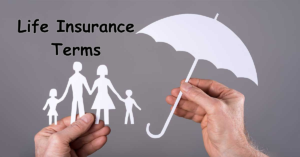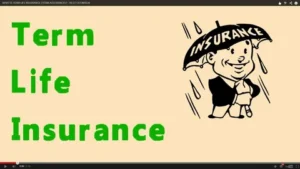
What Is An Example Of Insurance Policy?
Essential insurance policy
outdoor activities not only contribute to improved physical health through cardiovascular and muscle strengthening exercises but also play a significant role in enhancing mental well-being. Immersing oneself in natural surroundings can lead to reduced stress levels, improved mood, and a greater sense of inner peace. This multifaceted impact underscores the importance of incorporating outdoor activities into one’s lifestyle for holistic health and happiness.
Essential Insurance Policies Every Young Adult Homeowner Should Know About
Navigating the world of insurance can be daunting, especially for young adults who are new to the homeownership scene. Whether you’ve just purchased your first home or you’re simply exploring your options, understanding the range of insurance policies available to you is vital. Here’s a detailed look at the essential types of insurance young adult homeowners should be familiar with, using relatable examples and scenarios to help you grasp the importance of each.
1. Why Insurance Matters for Young Adults and Homeowners
Before we jump into the insurance policy, it’s crucial to understand why insurance is a non-negotiable part of adulthood. For young adults who’ve recently stepped into the shoes of a homeowner, insurance is your financial safety net. It safeguards you against the unexpected, such as natural disasters, theft, and accidents. Knowing you’re covered can provide peace of mind as you build your life and future.
2. An Example of Basic Homeowners Insurance Policy
Homeowners should be well-versed in what a basic policy offers. Here, we’ll break down what a typical HO-3 policy includes, how much it generally costs, and the reassurance it provides.
What does it usually cover?
A standard HO-3 policy typically covers damage to your house and personal belongings from specific events, such as fire, lightning strikes, windstorms, and hail. It often includes liability protection in case someone is injured on your property.
How much can it cost?
The cost of a basic homeowners insurance policy depends on various factors, such as your home’s value, your location, and your credit score. For a young adult purchasing their first policy, it could range from $800 to $1500 annually.
The benefits of HO-3
The main benefit is financial protection for your home and the assets you’ve worked hard to accumulate. It can also provide temporary living expenses if your home is rendered uninhabitable.
3. Case Study: Real-Life Example of Utilizing Homeowners Insurance
To illustrate the real-world importance of homeowners insurance, we’ll walk through a hypothetical situation where a young adult homeowner experiences a house fire. The insurance payout covers the repair or rebuilding of their home, as well as the replacement of personal items damaged in the fire, easing the financial burden during a difficult time.
4. Tips for Affordable Homeowners Insurance
Young adults tend to be cost-conscious. Therefore, knowing how to lower your homeowners’ insurance premiums can be a game-changer. Here are a few tips to help keep your insurance costs within budget.
Increase your deductible
Opting for a higher deductible can significantly lower your premium. Just ensure you can afford the deductible in case you need to make a claim.
Bundle your policies
Many insurance companies offer discounts if you purchase multiple insurance policies with them, such as homeowners and auto insurance.
Invest in home security
Installing a home security system not only keeps your home safe but also often leads to lower insurance costs.
Regular home maintenance
Frequent home maintenance, like roof inspections and checking for leaks, can prevent larger, more costly issues that might affect your premiums.

5. Alternative Insurance Policies for Homeowners
While a standard homeowners policy is comprehensive, there are several other types of insurance you might consider depending on your circumstances.
Renters Insurance
For young homeowners who may still have tenants or roommates, renters insurance can protect their personal items and provide liability coverage in case of accidents.
Flood Insurance
Especially important for those living in flood-prone areas, this insurance covers damages to your home and belongings caused by flooding.
Earthquake Insurance
If you reside in an earthquake-prone region, this insurance policy will cover damages to your home resulting from seismic activity.
6. Conclusion:
Young adults must prioritize understanding and securing insurance policy that protect their most significant investment—their home. Research, budgeting, and comparative shopping are essential steps in ensuring you have robust insurance coverage that fits your needs. Don’t wait for an unfortunate event to occur; act now to safeguard your future.
My opinion:
In my opinion, the emphasis on the need for insurance, particularly for young adult homeowners, cannot be understated. The transition into homeownership is a monumental step, fraught with both excitement and potential risks. Insurance serves not just as a safeguard but as a foundation for financial security, allowing homeowners to face unforeseen circumstances with confidence. The outlined policies, from standard homeowners insurance to more specific coverages like flood and earthquake insurance, highlight the diverse range of protections available. Tailoring these options to fit one’s specific living situation and risk profile is not just smart; it’s essential for long-term peace of mind and stability.
FAQ:
What is the difference between HO-3 and HO-5 homeowners insurance?
HO-3 policies typically offer a broad range of coverage for your home and personal property against specific listed perils. HO-5 policies, on the other hand, offer more comprehensive coverage, protecting against almost all perils unless explicitly excluded. HO-5 policies generally provide a higher level of protection, including for personal belongings.
Do I need both renters insurance and homeowners insurance?
If you own your home, homeowners insurance is necessary to protect your property and liability. Renters insurance is designed for those who rent their living space and need to protect their personal belongings and liability; it doesn’t cover the physical building. If you have tenants renting part of your home, they may need renters insurance while you have a homeowners insurance policy.
How can I find out if I’m in a flood-prone area?
You can check the FEMA Flood Map Service Center on their website to see if your property is in a flood zone. Additionally, local government offices or your insurance agent can provide information on flood risk in your area.
Can I get insurance if I live in a high-risk area for earthquakes or floods?
Yes, you can obtain insurance for high-risk areas, but it may be through specialized policies like flood insurance through the National Flood Insurance Program (NFIP) or earthquake insurance through private insurers or state-run programs where available. These policies are separate from standard homeowners insurance and often come at an additional cost.
How often should I review my homeowner’s insurance policy?
It’s wise to review your homeowner’s insurance policy annually or whenever there are significant changes to your home, such as renovations or major purchases, to ensure your coverage is adequate. Also, reevaluate your policy if there are changes in local building costs or if the policy terms have changed.
Disclaimer:
The information provided in this document is for general informational purposes only. It is not intended as financial, insurance, legal, or professional advice for any specific individual situation. The details and coverage options discussed may vary by location and insurance provider. Readers are encouraged to consult with a professional insurance advisor or company to determine the most appropriate insurance solutions for their specific circumstances. The authors and publishers of this document make no representations or warranties about the accuracy or completeness of the information provided, nor should any action be taken based on the content of this document without first seeking professional advice.





